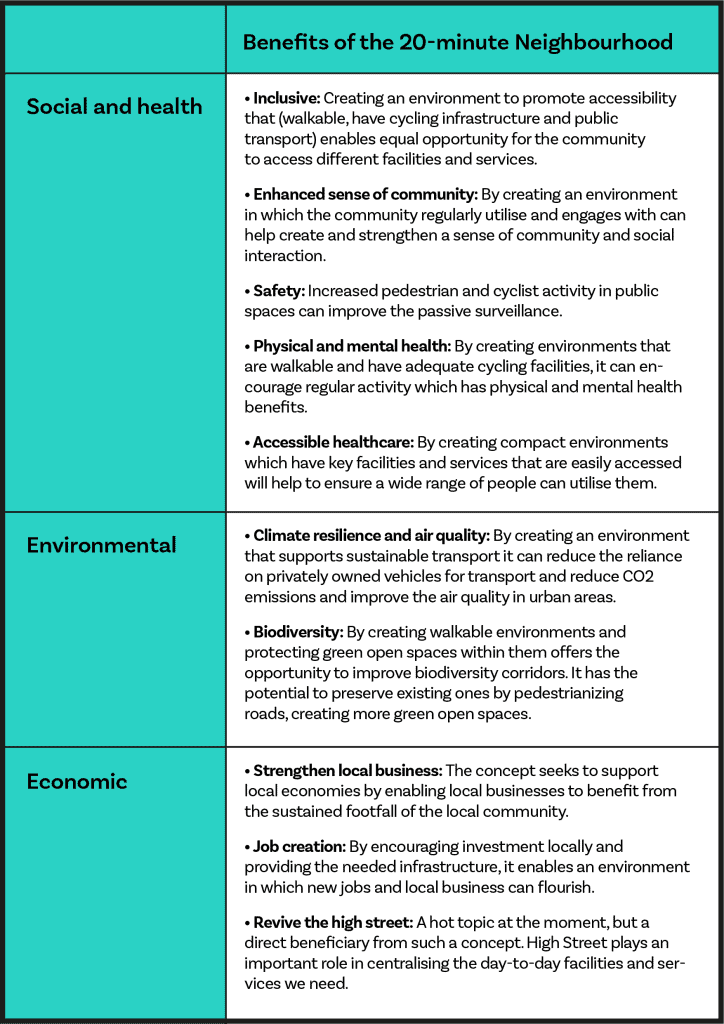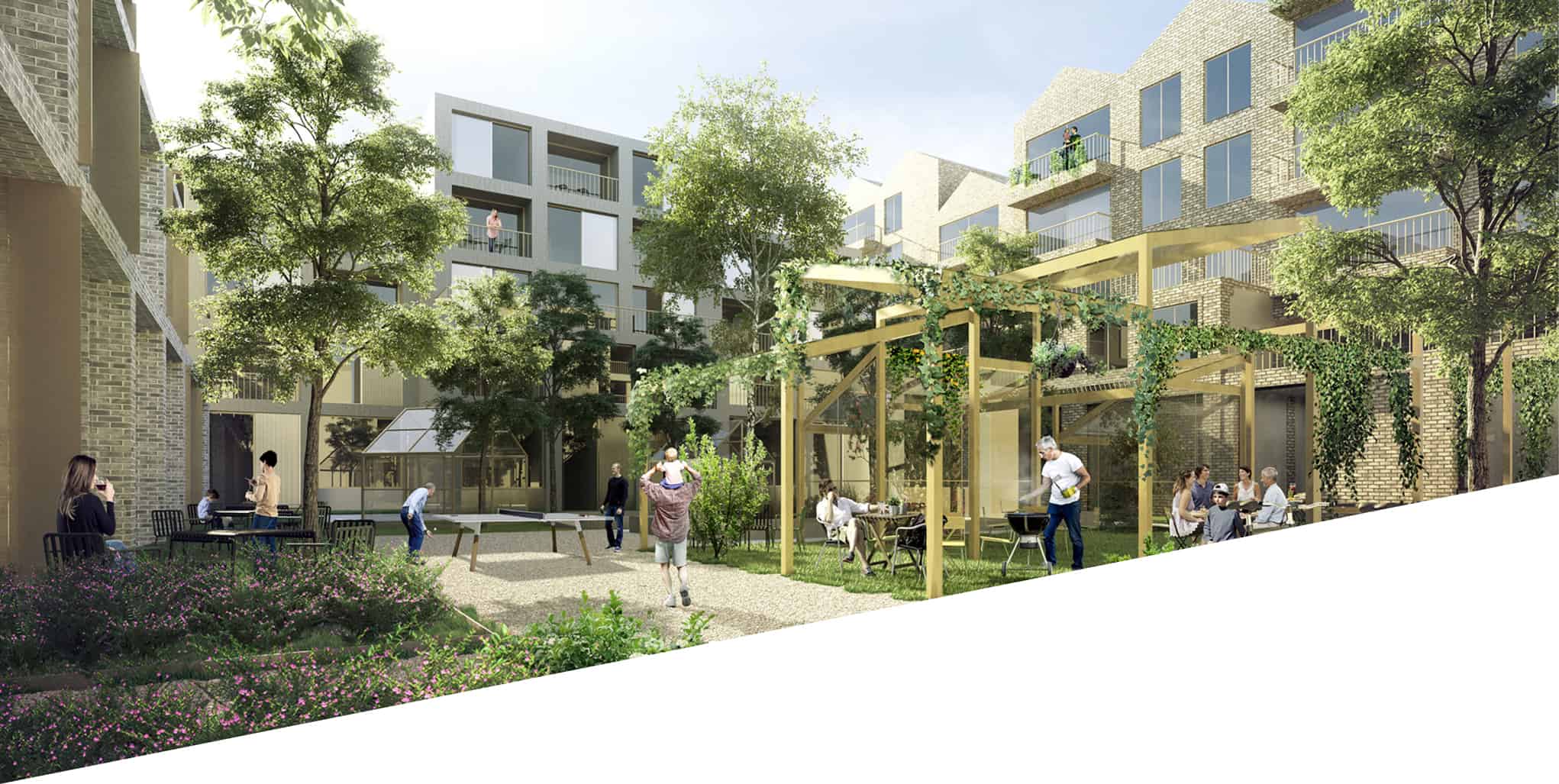The 20-Minute Neighbourhood
Published: 31.03.21
Introduction.
The concept of the 20-Minute Neighbourhood seems to be the talk of the town within the built environment professions at the moment. This is not due to it being a new concept as it has in fact been around for several years but has had its flame reignited in response to a year that forced us to rethink about cities and how we use them. A global pandemic has forced us to stay at home and rely heavily on the provisions within our local communities. Music to the ears of a 20-Minute Neighbour purest.
What is the ’20-minute neighbourhood’?
The idea of the 20-Minute Neighbourhood stems from the Garden City model of development devised in the late 19th century by Ebenezer Howard.
‘Simply put, the Garden City model sought to promote the need to adopt holistic place making process which promoted the natural environment and ensured that access and diversity were the blueprint for development.’
Whilst some would say that Howard’s vision for the Garden City is easily transferable to those of the 20-Minute Neighbourhood, implementing the 20-minute Neighbourhood is slightly more fluid than that of its role model.
The concept acknowledges that no two places are the same and therefore it is not possible to produce a set road map upon which it requires all future place making processes to follow. However, what does matter and what is at the core of the concept is that the process strives to achieve a holistic approach to place making with the overarching intention to improve people’s health and wellbeing.
The consensus is that the 20-minute Neighbourhood is about creating safe, attractive, walkable environments which are easily accessible and provide a diverse range of facilities and services that meet the daily needs of the community.
‘In its essence, it will enhance local opportunities and create active spaces.’
What are the benefits?
The table below provides a summary of some of the key benefits that are attributed to a more compact and connected environment.

Where to start?
Whilst it is apparent that planning has a key role to play in the adoption process, it is undeniable that the concept is multi-faceted. It will require political support, multi-disciplinary engagement at a local level, stakeholder partnerships and comprehensive community engagement is key. Theoretically, the concept would appear to be just what we need in a time where the role and function of the city is rapidly evolving. However, practically, it will be incredibly complex to implement, particularly within the existing built environment.
But who are we to shy away from a challenge? The concept of the ’20-Minute Neighbourhood’ provides a great opportunity to throw a proverbial lifeline to revive the high street and give them a newfound purpose.
‘Last summer there were several high streets that were pedestrianised in order to provide outdoor dining and seating. The footfall generated was a welcome relief to many of the local businesses and created a unique sense of place and community.’
The narrative of creating compact and connected environments highlights the need to retrofit parts of the urban fabric that are underutilised whilst identifying the need to support appropriate developments on infill and brownfield sites.
The concept of the ‘20-Minute Neighbourhood’ presents a unique opportunity to help shift the narrative of trying to achieve a work-life balance within cities and rather enable a work-life integration.


